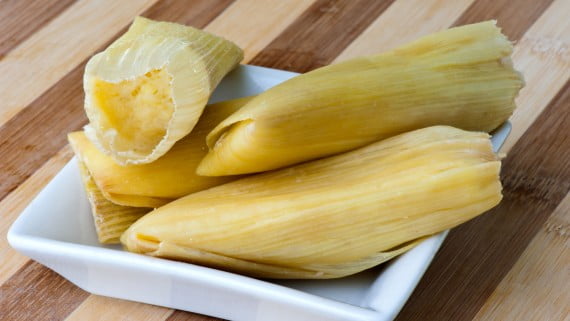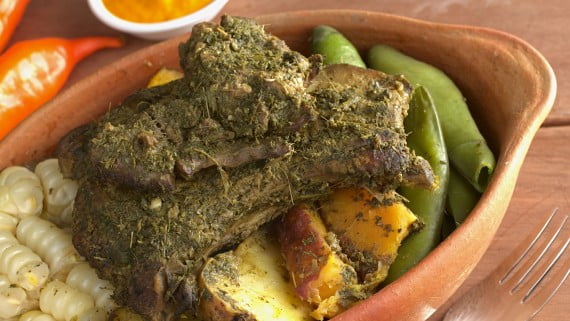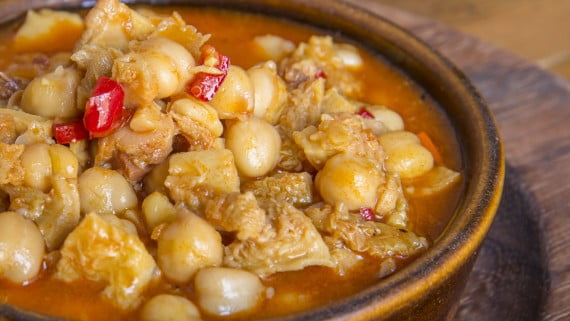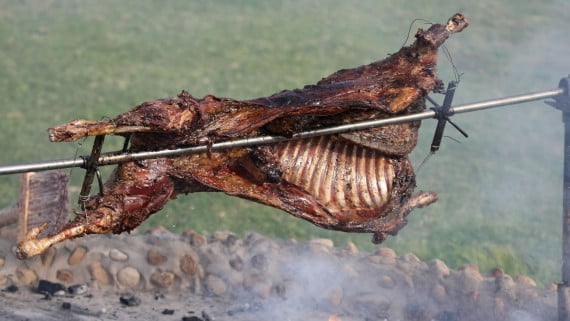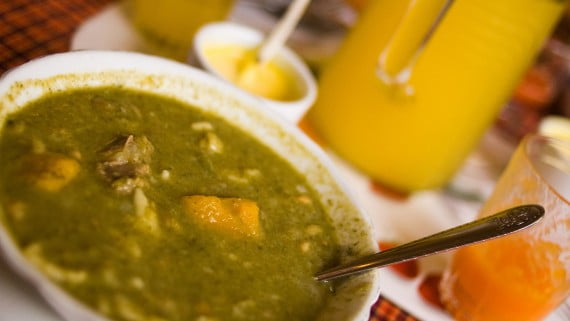In the Peruvian Sierra or Serranía, typical Peruvian dishes are also consumed, but it also has a good number of unique dishes that make this region an exquisite place to go on a gastronomic route. Read on to learn about the main foods of the Peruvian Sierra.
Below you have an index with all the points that we are going to deal with in this article.
Article Index
- 1.
- 2.
- 3.
- 4.
- 5.
- 6.
- 7.
- 8.
- 9.
- 10.
- 11.
- 12.
- 13.
- 14.
humitas
The humita or huminta is an original dish from the Andean Region and is consumed in almost all of South America (Argentina, Chile, Bolivia, Peru and Ecuador). In the recipe of each of these countries, the main ingredient is not missing shredded corn, dressed and wrapped in its own leaves, which are then cooked or roasted.
In the Peruvian Sierra specifically, this food began to be cooked as early as the seventeenth century, a time when it was called "tamales" or "corn bollicos". However, the basic recipe was the same as the current one: ground corn kernels and mixed with additional ingredients, usually cheese, meat, raisins or even dulce de leche.
Thus, there are both sweet and salty humitas, depending on the ingredient with which we mix them. The way to cook it is usually a pot, although it can also be done in the oven, steamed or even in the microwave. There is a variant of the classic humitas to which is added milled corn and in Quechua language it receives the name se shatu.
Fried trout
Fried trout is the quintessential dish of the city of Puno, located in southeastern Peru. Trout is a semi-fat fish with a high content of Vitamins y minerals, so it is considered a very nutritious food whose meat has a good contribution of phosphorus, potassium, magnesium, iron ...
The Peruvians of the Sierra know this very well, which is why fried trout has become a classic that tourists cannot stop trying. In addition, the recipe for fried trout is very simple and is usually accompanied by a salad and fried or parboiled potatoes (leaving them half raw and unseasoned).
To prepare them ourselves we do not need more than approximately 1 kg of trout, garlic, salt, cumin and pepper, flour and oil. Previously, the scales must be removed from the fish, cut and seasoned with garlic, salt, pepper and cumin.
Then it is important to leave it macerate for about 30 min and finally fry it in very hot olive oil until it is golden brown. In the following video you can learn how to make Peruvian fried trout step by step:
Pachamanca
Not only from the Peruvian Highlands, but from all over the country, pachamanca is one of the most popular dishes in Peru. The main ingredients are beef, pork, chicken and guinea pig, all mixed. However, it is important to season them beforehand with ingredients as typical of Peru as the chincho, an original herb from the Andes, as well as huacatay, cumin, chili, pepper and other spices.
Nor can they be missing native products from the Peruvian Andean Region, such as corn, beans in pods, potatoes, sweet potatoes and, to a lesser extent, cassava. It is for this reason that, if we break down the meaning of his name, we realize that pacha means "land" in Quechua language and manka is equivalent to "pot"; therefore, it would come to mean something like "pot of the earth".
Pachamanca has existed since the late archaic period in the Fortaleza Valley and is also a widely consumed dish among the indigenous communities of South America. In short, it is a dish that comes from the era of the Inca Empire, with slight variations over time mainly related to the method of preparation.
The way to cook it is also very relevant, since the original recipe says that it must be made in a traditional oven, that is, opening a hole in the ground and placing stones, which will later be heated by the burning of logs.
In addition, it is not recommended to use any type of stone, since a high sulfur content could alter its flavor. Therefore, the most used type of rock is called fancy. You can see how pachamanca is traditionally cooked in the following video:
Lamb head broth
The lamb's head broth is so popular in Peru that many even claim that it has the property of recharging the batteries of those who drink it. Its main ingredient is young lamb meat, because it is a good source of vitamins, minerals and, above all, minerals.
It is a broth rich in calories, so it is not surprising that its flavor is very intense. To prepare it, the first thing to do is cut up the lamb's head and boil it for a minimum of 2 hours.
The best thing to do for optimal results is to boil it naturally, that is, not with a pressure cooker. If you want to learn how to prepare lamb's head broth and see what this delicious dish looks like, we recommend watching the following video:
When the broth is substantial enough, the rest of the ingredients are added: peeled white potatoes, rice and salt to taste. In addition, it is important to add a touch of paico y good herb at the end of the process. Once served on the plate, it is usually accompanied by mote, boiled yucca and a glass of herbal water, which helps reduce the fat levels in the broth.
This dish can be found in the different street markets of Huánuco, Pillco Marca and Amarilis. The total price of the plate is between 5 and 6 peruvian soles.
Patasca or tripe
By the name of pataca or tripe refers to a species of hot which is prepared with a nickname in the Peruvian Sierra as well as in the Andean areas of Bolivia, Chile and Argentina. The name comes from the Quechua term phatasqah and, literally, it means "split" or "burst", due to the large number of ingredients it has.
It is also called tripe because one of its ingredients is, in fact, tripe, which are cow tripe. In the different countries of Latin America, this ingredient can be called in different ways, namely: guatita, pancita, menudo or tripa mishque. In fact, one of the typical dishes of Ecuador They are the guatitas.
In addition to the tripe, the pataca is made with beef y fashion, although in some areas of Peru a ram's head is also added. However, the pataca recipe may vary depending on the customs of each Peruvian city. Thus, the pataca that is prepared in Ancash or Cajamarca is not the same as that of Moquegua or Tacna.
Stewed tongue
Tongue stew or simply stewed tongue is another of the typical Creole dishes of the Sierra de Peru. It is a rich and easy recipe to prepare, although none of its main ingredients should be missing, including beef tongue, red wine, tomatoes, onions, carrots, bay leaf, ground red pepper, cumin, etc.
The first and most important step is boil the tongue of beef for several minutes. This step is essential, since otherwise we will not be able to peel and clean it before serving. Once peeled and cleaned, we repeat the first step. Then we will let it cool and cut it into slices. After all these steps, we will almost have the dish ready.
The yellow dock is flavored with the ingredients mentioned above. To do this, all of them, duly peeled and chopped, are added together with the tongue in the pot where we had boiled it.
The objective is to obtain a stew that is as rich and nutritious as possible, so they must be left to cook for a long time so that the flavors of each ingredient are enhanced and mixed well. It is usually served accompanied by White rice. In the video shown below you can learn how to prepare tongue in roasted red sauce:
Shambar
Shambar or chambar is another of the most popular Peruvian soups. In this case, the traditional recipe originates from the city of Trujillo, which in turn has its origins in the Andean people. It is a typical recipe from the Peruvian Sierra precisely because most of the ingredients with which it is prepared are typical Serrano: ham, beans ...
This soup is usually served as a main or background dish, as it provides calories and other nutrients such as carbohydrates, calcium and phosphorus. Its name is due to the variety of Shambar wheat, which is the star ingredient of this dish. In fact, in reality, this dish is nothing more than a wheat soup.
In addition, this soup brings with it a deeply rooted custom among the inhabitants of Trujillo and that is the traditional Monday food, especially in the department of La Libertad, in northern Peru. Possibly the origin of this custom dates back to the settlers of the mountains. It is said that they prepared this dish on Mondays with the weekend leftovers.
Red guinea pig
The guinea pig is a widely consumed animal throughout Peru, as can be seen by reviewing the gastronomy of the Peruvian Amazon, where it is cooked roasted and served with potatoes. The way of cooking it varies a little from region to region of the country and in the Serranía it is known as red guinea pig because your recipe includes Aji Colorado, which gives it a darker color.
This dish is cooked mainly in Huancayo, Junín (Peru) and the recipe includes between 2 and 4 guinea pigs, boiled yellow potatoes, red chili, minced garlic, corn flour, chicha de jora, achiote, egg, cumin and other spices and salt to taste. In addition, the Sierra recipe differs from others because in this case the guinea pig is battered, so that it acquires a crunchy touch and a golden appearance.
ocopa
The ocopa is considered a typical Peruvian dish, although it is original from the city of Arequipa. The green aspect of this dish is due to the fact that huacatay (minute tagetes), a species of grass that grows in the coast, mountains and Amazon of Peru, as well as in the high valleys of Bolivia and Ecuador, extending to Mexico and the United States.
Thus, in addition to being the essential ingredient of ocopa, it is used in many other Arequipa dishes such as salsicucho and numerous roasts and stews. For its part, the ocopa is a very simple dish, whose original recipe consists of potatoes and boiled eggs to which is added this famous huacatay sauce and, optionally, olives.
The dish is similar to a typical Peruvian dish called “papa a la huancaína”. The following video shows the recipe for both dishes:
Ram on the stick
The carnero al palo is a very well-known dish throughout Peru. However, it is common for it to be served with other types of meats. Its preparation is, although it lasts several hours, since it is really cooked on the grill like the traditional roast of the Argentine cuisine or the traditional churrasco of the brazilian gastronomy.
To prepare this rich dish, a whole ram is needed, which will be inserted into a rod and cooked with firewood for at least 4 hours. During this time, it is important to turn it every hour so that it cooks evenly and both sides are well browned.
Prior to this, it must be spread in lemon and exposed to the sun, season with the rest of the ingredients that will accompany it (garlic, ají panca, cumin, salt, pepper and chicha de jora). Afterwards, it will marinate for about 2 hours.
papa la huancaina
As we have already said before when we have talked about the ocopa, the dish called Huancaina's style potato It is typical of the coast, the mountains and the Peruvian jungle. Huancaína is the name given to the yellowish cream that covers this dish, which is originally from Huancayo. Along with Peruvian ceviche, it is one of the most popular dishes in the country.
It is an original dish from the Mantaro valley, which is famous for the production of buttery cheese as well as the production of potatoes, of which two different varieties are produced. Cooking began at the time of the Central Railroad of Peru, where the large number of workers who worked there ate this food.
Under the sauce, the ingredients that are usually used are hard-boiled egg y boiled potatoes on a lettuce leaf. Optionally, olives are also used to decorate. The difficulty in making this dish is actually making the sauce, the ingredients of which are: buttery cheese, a little oil, yellow pepper, milk and salt. It is important that finally there are no lumps.
Chupe verde or yaccochupe
The green chupe, green soup or yaccochupe is an ancient soup of Andean origin, especially popular in the Peruvian Sierra, specifically in the department of Huancayo.
As can be seen throughout this guide, a large number of soups are consumed in the Peruvian Highlands. This is because in this area of Peru there is a climate that tends to be cold, which is why very hot dishes are highly appreciated.
The name of this dish is due to the variety of herbs that it includes in its recipe, which give it that characteristic green color. Some of these herbs are as follows: muña, huacatay y paico.
To these, other ingredients such as fresh cheese and milk are added, in addition to the classic “boiled egg”, which consists of a hard-boiled egg that is drilled at both ends.
Pork rind
Pork chicharrón is one of those dishes that is traditionally eaten on Sundays at any self-respecting family meal. It is also a very popular dish in other Latin American countries, which also has the advantage of being very easy to prepare.
In addition, it does not take too long to prepare, but each step must be followed carefully to achieve the flavor and consistency that characterize this dish.
The pig is nothing more than pork and the rest of the ingredients are: garlic, onion, soy sauce and sweet potato. This last ingredient is essential, since a pork rind without sweet potato is not a Peruvian pork rind. In fact, in the gastronomy of Colombia and Bolivia this ingredient is replaced by the banana.
Unlike the rest of the garnishes, the original recipe dictates that the banana must be cooked together with the pork so that both flavors mix well. When serving it, it is quite common to do it together with a salad, but this is optional and not all Peruvians add it.
llapingachos
Llapingachos are a dish that dates back to the era of the Incas and the Aztecs, approximately 6.000 years ago. In short, it is a traditional and representative dish of the Ecuadorian cuisine It is served especially in the central Andean region of Ecuador and southern Colombia.
Although it is one of the most representative of mountain food, it represents, as we said, the culture of Ecuador due to its traditional characteristics and the way it is prepared.
It is a kind of grilled tortillas that are made well with potatoes and well with yuccas boiled that, later, are crushed, so that the appearance that we can see in the image is obtained. Once done, they can be eaten alone or with an additional ingredient, such as: chorizo, onions, rice, lettuce, fried egg, roast meat, avocado ...
This article has been shared 371 times. We have spent many hours collecting this information. If you liked it, share it, please:

